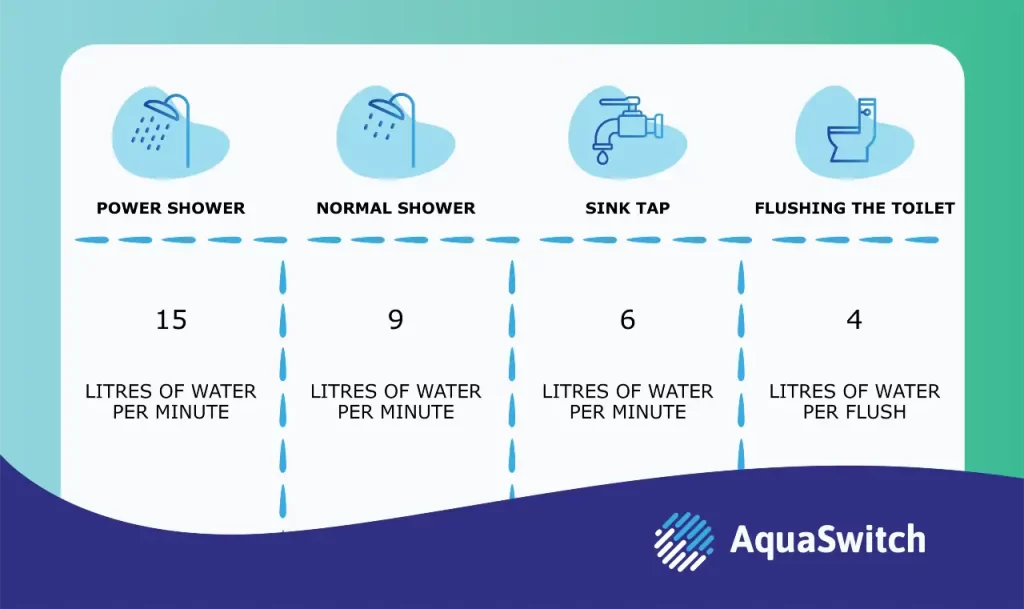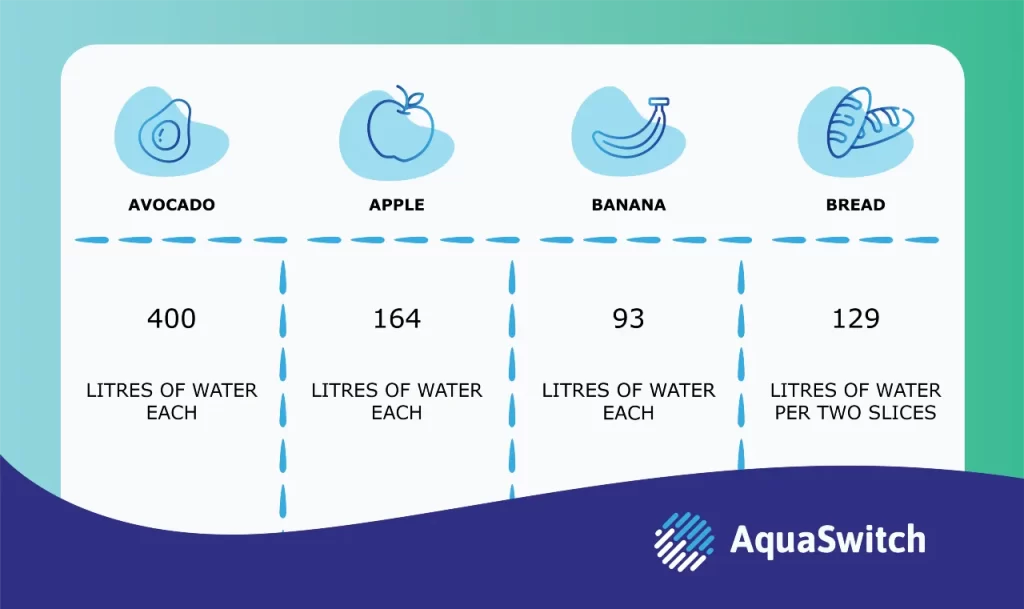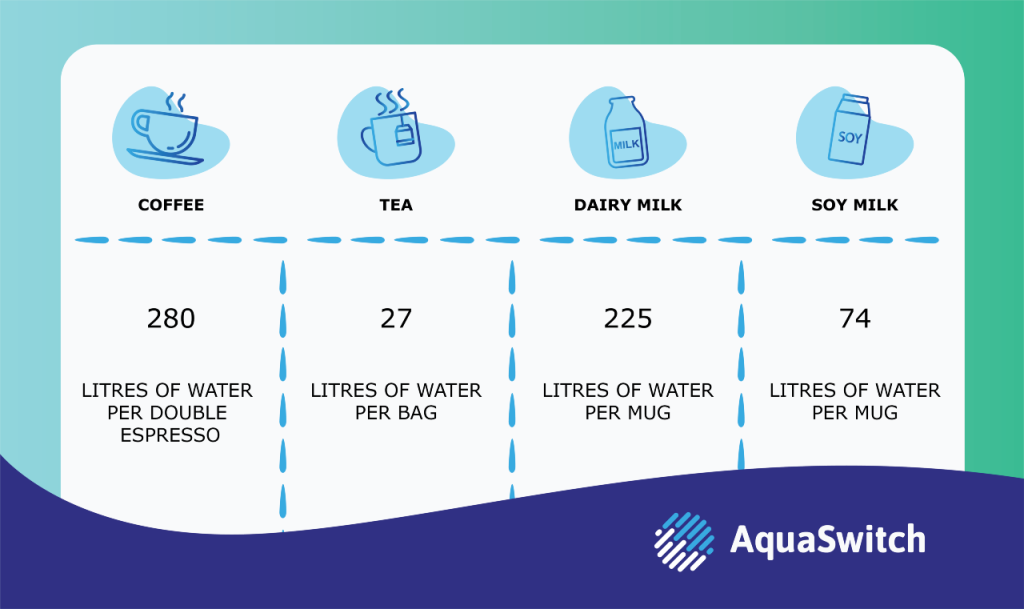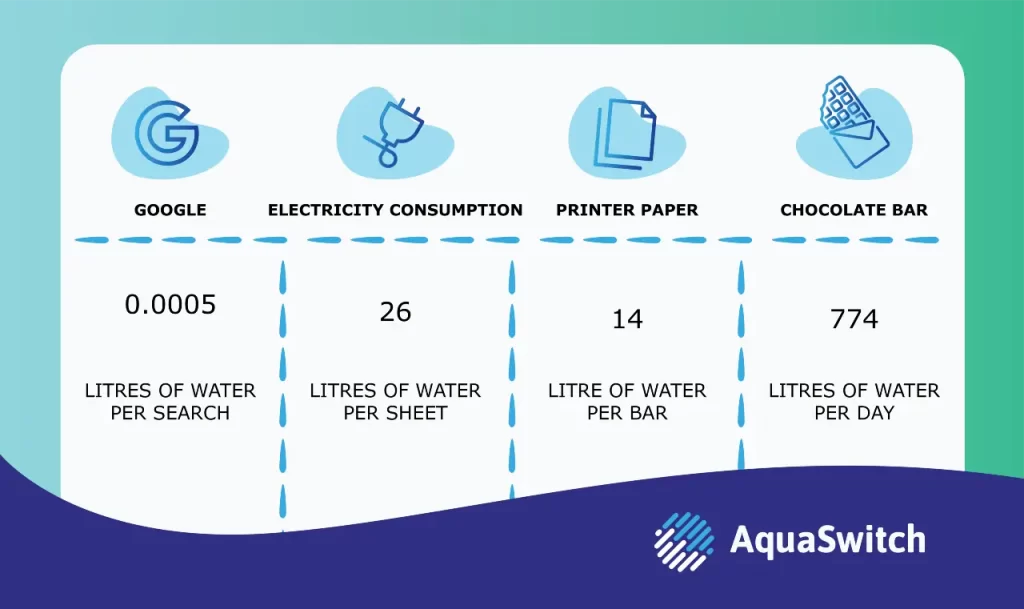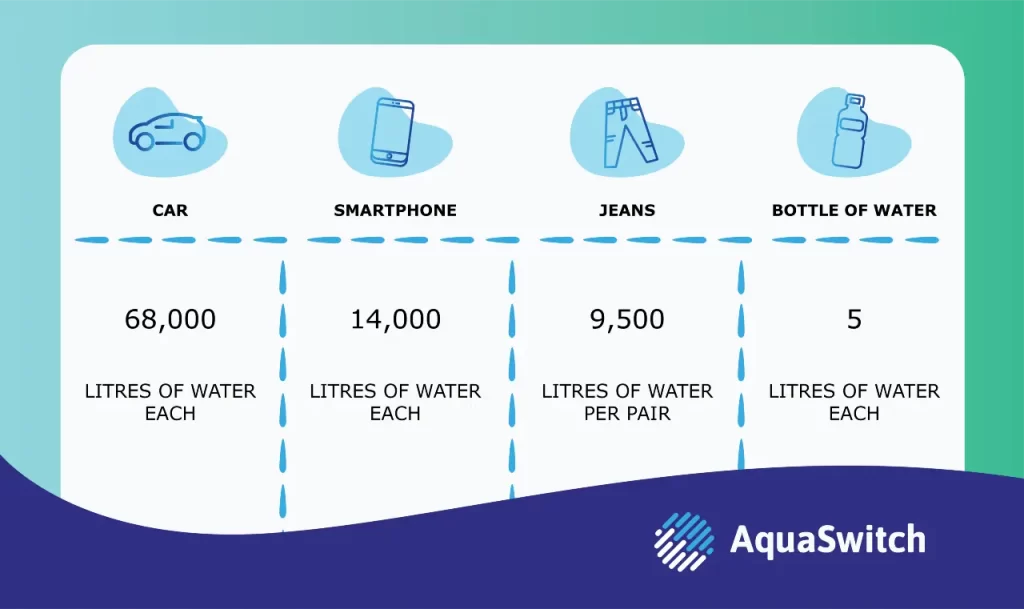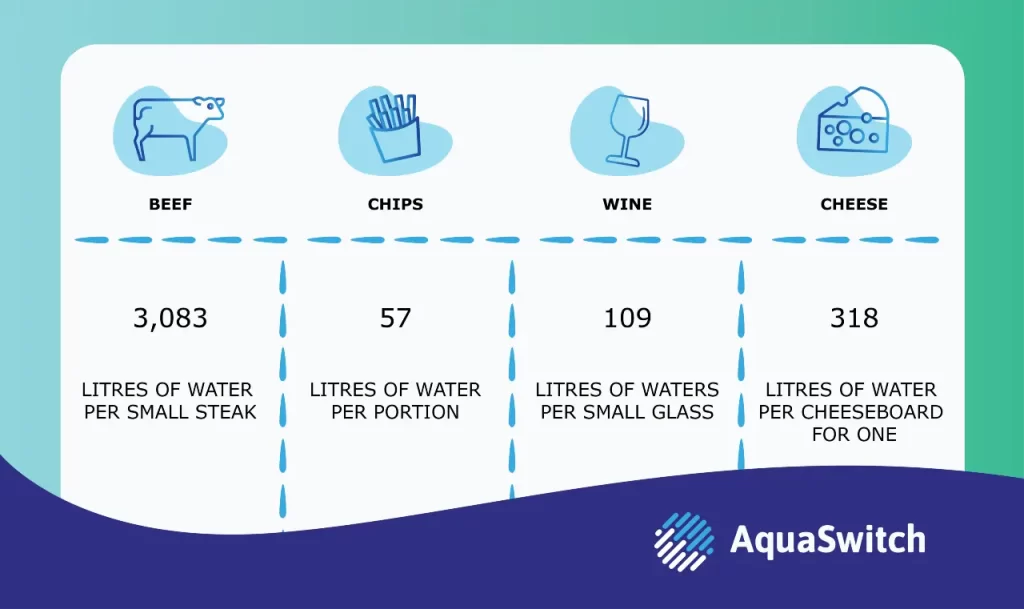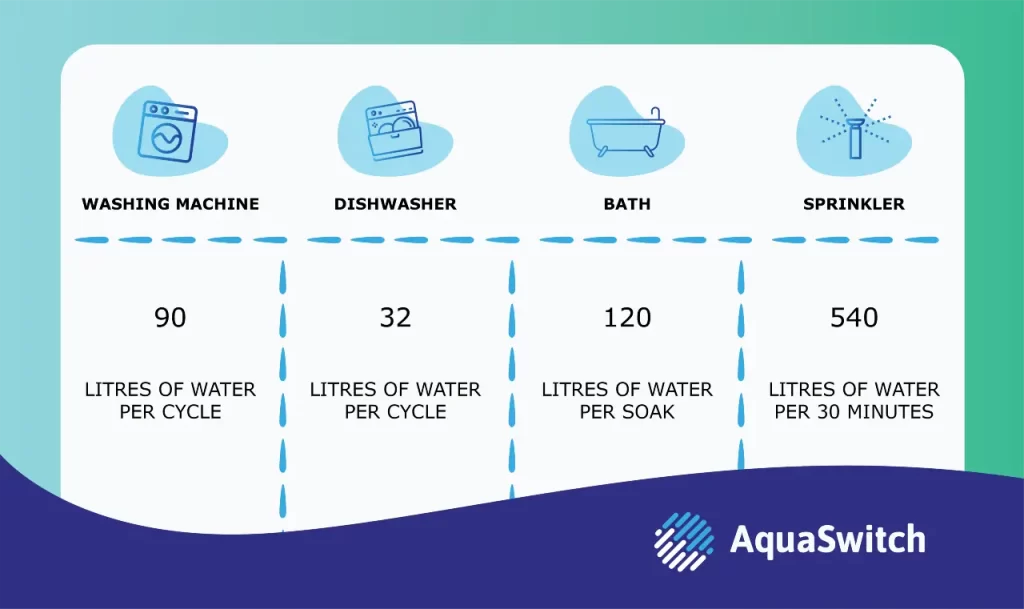Climate change is causing more droughts and less predictable rainfall worldwide. This fact, twinned with dramatic population and economic growth, means water is becoming a scarce resource that needs greater attention to avoid future shortages. The United Nations predicts that 6 billion people will suffer from clean water scarcity by 2050.
It is hard to imagine water scarcity being a problem here in the UK. But if we do not act now, that could be our reality. The Environmental Agency describes water scarcity as an existential threat.
Most of us have a good idea of how our activities contribute to global warming. But do we understand how our daily lives contribute to water scarcity? You’ll be surprised by the results.
Let’s take a look at the average day of our protagonist, Alex, who’s about to wake up to a typical Tuesday morning.
7.00 am – The alarm clock rings
After sleepily pressing snooze for the third time, Alex gives up on further sleep and stumbles into the bathroom. To avoid waking his partner last night, Alex didn’t flush the toilet after his midnight pee. Thankfully, he does so now. Four litres of water disappear into the drains.
The water consumption continues with Alex’s fancy power shower draining 105 litres of water during his seven-minute soak.
Alex is not a big believer in dental hygiene, so he only brushes for 45 seconds while leaving the tap running. Little does Alex know that his poor oral hygiene has saved the world 8 litres of water.
8.00 am – Breakfast
Alex, being a millennial, likes to spend his earnings on avocado-based sustenance from his local artisanal cafe.
Avocados are grown in warmer climates where water scarcity is a big issue, and each plant requires a huge amount of water to grow. The smashed avocado on sourdough toast Alex has picked up on his way to work required 500 litres of water to produce.
10.00 am – Caffeine break
Alex doesn’t like his job all that much. After sitting at his desk for ninety minutes shuffling numbers about a spreadsheet, he decides that a caffeine break is necessary to maintain his state of partial awakeness.
Alex has a soy milk latte with a double shot of espresso. Another 535 litres of water has gone into powering Alex through his day.
By choosing a dairy alternative, Alex has reduced his water consumption by almost 200 litres. Cutting cows out of the milk production process significantly improves water efficiency. A dairy cow not only drinks about 50 litres of water a day but eats a whole load of grass which requires water to grow.
The afternoon – Procrastinating office worker
Alex has a critical deadline next week. Still, he can’t quite motivate himself to start working towards it. Instead, he decides the most productive way to spend the afternoon is to surf the internet, acquiring life hacks that will help him avoid wasting time on the internet.
After hours of research on this important subject, punctuated by the odd bit of work and a snack, Alex thinks he’s found the answer. He prints off a motivational poster and pins it above his desk.
He promises himself he will do better tomorrow, turns off his computer, and heads for the door.
Our day to day use of electricity itself consumes water. Most conventional power stations heat water to produce steam to drive a turbine generator.
Even Alex’s exhaustive search for a solution to procrastination required water. The search engines we all use need water to cool the stacks of computers that process search queries.
17.30 pm – Hitting the shops
Alex justifies the drudgery of his chosen career in accountancy by having a big house, fancy car and lots of gadgets. Alex buys stuff to fill the void in his existence.
Today Alex noticed that his favourite pair of jeans had developed an embarrassingly positioned hole revealing his vibrantly coloured boxers.
On his way home, Alex heads to the high street to pick up a new pair of jeans.
Alex’s consumeristic lifestyle has an enormous water footprint. Even the 300ml plastic bottle of water Alex purchased at the shops required 5 litres of water to produce.
19.00 pm – Dinner time
This evening Alex and his partner are celebrating their second anniversary. Alex is treating his spouse to some french cuisine that he is preparing. They don’t often eat meat, priding themselves as ‘flexitarians’, but tonight is a special occasion. They enjoy a meal of steak, chips and a bottle of red wine, followed by a cheeseboard.
Alex may have successfully discharged his duties as a loving husband, but he’s deprived the environment of approximately 10,000 litres of water.
Animal products generally have a much larger water footprint than plant-based products. The simple reason is that animals need to eat too, and producing that feed uses lots of water. A single steak requires 15 times its own weight in grass eaten by the cow.
Had Alex opted for a mushroom risotto, as much as 5,000 litres of water could have remained in a river instead of being used to irrigate a cattle field.
20.00 pm – Washing up
Alex’s house is full of appliances that make domestic life a breeze. The dishwasher is loaded, the washing machine is filled. Even the garden waters itself with a sprinkler system.
After a luxurious soak in the bath, Alex is ready for bed. As he falls off to sleep he is blissfully unaware of the impact of his life on water scarcity.
What can I do to reduce my water impact?
As we’ve seen, most things that Alex, and all of us, do in our day-to-day lives have some kind of water footprint. While turning off the tap while you brush your teeth is a good thing to do, the water we directly use is only a tiny fraction of our overall water consumption.
The two changes we can make to our lives that will have the most considerable reduction in our water footprint are:
- Eat less meat
- Buy less stuff
Happily, these two changes align directly with the changes we should make to prevent climate change.
Animals are not efficient producers of food. Not only do farm animals consume tonnes of water, but they also require vast tracts of land and produce methane, a particularly harmful greenhouse gas. Animal agriculture is responsible for 15% of global greenhouse emissions. In the US, a third of all water consumed goes to irrigate crops that feed farm animals.
Most material goods we buy require extracting metals from the earth, consuming water, and burning fossil fuels in both production and transportation. The industrial processes by which everyday consumer goods are made cause most of our water footprint and environmental damage.


